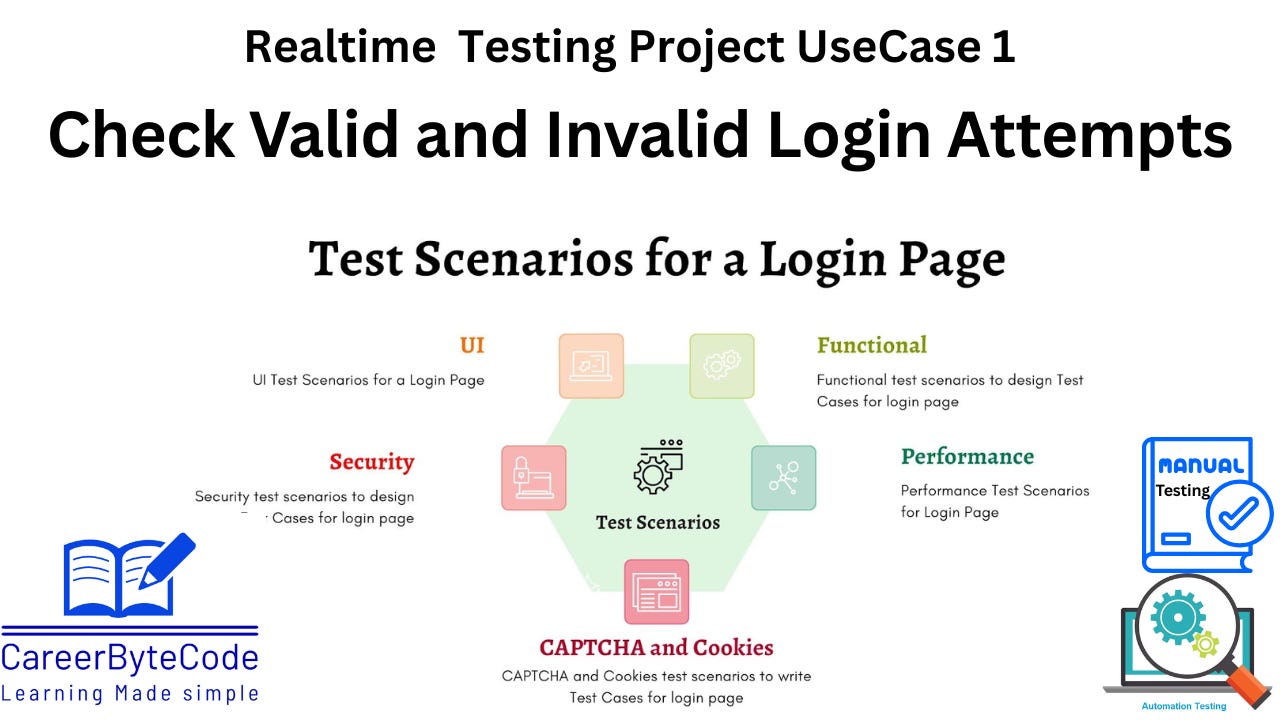Cracking the Code: Mastering Valid and Invalid Login Attempts Through Automation
Manual login validation is repetitive and time-consuming. Need automation to validate both valid and invalid login attempts.
1. Scenario : Automating Login Validation
Problem Statement:
Manual login validation is repetitive and time-consuming. Need automation to validate both valid and invalid login attempts.
Scenario:
A web-based application requires username and password login with multi-level validations. Developers push updates weekly that may break the login flow.
Approach:
Use Selenium WebDriver to open the browser and navigate to the login page.
Write test cases in TestNG or Pytest to handle multiple scenarios (valid, invalid, empty inputs).
Add assertions to validate error messages and redirection.
Use Cucumber feature files to manage scenarios clearly for BDD-style reporting.
Use dynamic tags in Cucumber to run subsets of login tests during smoke testing.
Tools or Services to be Used:
Selenium WebDriver, TestNG or Pytest, Cucumber
2. Why We Need This Use Case
Manual login validation requires testers to repeatedly input usernames and passwords, check system responses, and document outcomes. This process is not only tedious but highly error-prone, especially when validating multiple user roles and negative test cases (e.g., wrong passwords, locked accounts).
By automating login validation, we can consistently and quickly test various login scenarios without human fatigue. Automation ensures better coverage, reduces human error, and accelerates the feedback loop to developers. It also helps maintain high-quality standards in applications where login functionality is critical (e.g., banking, healthcare, e-commerce).
Automating login validation enables teams to focus on more complex test scenarios, leaving the repetitive work to reliable scripts. In agile and DevOps environments, where continuous integration and testing are expected, such automation becomes a key quality assurance practice.
3. When We Need This Use Case
When the application requires frequent login validations across multiple testing cycles (e.g., after every build).
When login functionality includes multi-user roles (admin, user, guest) and needs coverage for each.
When negative testing (e.g., invalid passwords, locked accounts, disabled users) must be validated reliably.
When regression testing demands that login functionality always remains intact even after code updates.
When time-to-market is critical, and manual validation slows down delivery pipelines.
When security audits require validated reports of access control testing.
4. Challenge Questions
Keep reading with a 7-day free trial
Subscribe to CareerByteCode’s Substack to keep reading this post and get 7 days of free access to the full post archives.






